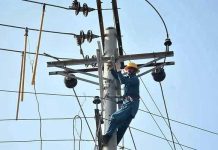ISLAMABAD: The All Pakistan Textile Mills Association (APTMA) has warned that the country’s textile exports could continue to decline unless the government takes steps to address the high cost of energy and other restrictions, reports WealthPK.
The APTMA has in particular called for creation of a separate power tariff category for the export sector, which would be exempt from cross-subsidies, stranded costs, and inflated system losses.
Talking to WealthPK, Mr. Naeem, APTMA member, said, “This proposal is premised on two critical aspects: electricity and exports.”
He argued that the high cost of energy was a major obstacle to the competitiveness of the textile industry. He pointed out that approximately 30-40% of conversion expenses in the textile sector were associated with energy.
“The government has set an ambitious export target of $50 billion for the textile industry over the next four years. To achieve this target, we believe that the government should provide the industry with a level playing field. This includes providing a competitive power tariff, removing import restrictions, and streamlining the tax refund process,” he said.
He contended that cross-subsidies, stranded costs, inefficiencies, and excessive transmission and distribution losses could not be passed on to the export markets, otherwise they would render the textile exports less competitive.
Mr. Naeem pointed out that as per the APTMA’s perspective, the expenses linked with cross-subsidies, stranded costs, and excessive transmission and distribution losses must be redistributed among other consumer categories.
According to him, if these costs are transferred to the consumers beyond the lifeline and domestic sectors, it would lead to a tariff increase of Rs3.7 per Kilowatt-Hour. He also noted that this potential increase could be balanced out by improving the efficiency of distribution companies (DISCOs) in their distribution margins.
The APTMA member maintained that the government could achieve significant cost savings amounting to Rs615 billion. This includes annual savings of Rs40 billion through a more efficient distribution margin management, Rs250 billion in recoveries resulting from improved loss mitigation measures, and an additional Rs250 billion through the enhanced debt recovery mechanisms.
He added that the proposed solution involved creating a specialized power tariff category exclusively for the export sector. This category would carefully exclude cross-subsidies and stranded costs while accurately accounting for the actual transmission and distribution losses within the B-3 and B-4 categories.
Additionally, prudent management could yield savings of Rs15 billion in connection with the System Augmentation Programme (SAP), address the issue of Rs10 billion in losses attributed to distribution transformer damage, and optimize excessive bill adjustments, potentially generating an extra Rs50 billion. This comprehensive proposal underscores substantial fiscal opportunities available to the government, as per Mr. Naeem’s explanation.
“In addressing the matter of energy price disparities, the APTMA draws attention to the Weighted Average Cost of Gas (WACOG) mechanism for gas pricing, which was enacted through parliamentary legislation but has yet to be implemented,” he said.
He further said this non-implementation had led to the closure of approximately 50% of industries in Punjab, resulting in widespread unemployment and posing a risk of spillover effects on the downstream industries in other provinces, particularly Sindh.
The inability to source intermediate inputs domestically could lead to increased reliance on imports, exerting further pressure on the foreign reserves, he pointed out.
In light of these challenges, it is imperative to reconsider the existing policies and adopt measures that promote a competitive and sustainable environment for the textile industry, thereby safeguarding its contribution to the national economy. Failure to take corrective actions may result in a further decline in textile exports, with projections indicating a potential decrease to $12 billion in the coming year. –INP






